REPORT: Free Speech in the Crosshairs: Bias Reporting on College Campuses
About Speech First
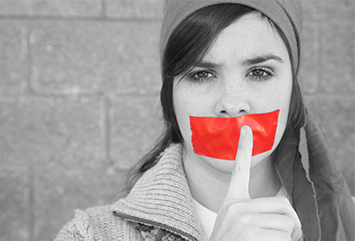 Colleges and universities routinely threaten their students’ speech rights. Those who fight back are met with open hostility from campus administrators, professors, and peers. As a result, students across campus are often denied the opportunity to express their views in open debate.
Colleges and universities routinely threaten their students’ speech rights. Those who fight back are met with open hostility from campus administrators, professors, and peers. As a result, students across campus are often denied the opportunity to express their views in open debate.
One increasingly popular method of quelling campus speech and enforcing ideological uniformity is the adoption of Bias Reporting Systems (BRSs), which schools often create under the guise of “Diversity, Equity, and Inclusion.” BRSs actively chill student speech through fear and intimidation. Sadly, the students themselves often anonymously report their peers for alleged infractions. By creating a tattle-tale culture, students are empowered to enforce agendas on others.
I could give you countless examples of brave students who stand up for what they believe in. But the prospect of standing up to a college or university can be overwhelming, expensive, and time-consuming (not to mention awkward, since the student still wants a diploma at the end of the day). That’s why many students stay silent.
The prospect of speaking freely looks less daunting when students are supported by like-minded individuals from all over the country and have the partnership and support of an organization with the resources to fight back. That’s why Speech First exists. We’ve created a nationwide community of free speech supporters so that students won’t have to go at it alone. We provide support every step of the way: on campus, in the media, and in court.
Speech First is restoring the freedom of speech on college campuses because when students are exposed to different and challenging ideas, they emerge stronger, smarter, and more resilient. That’s the point of education, after all. And that’s why we’re putting colleges and universities on notice that we’ll be there whenever they censor, shut down, or unjustly punish speech.
We hope you’ll join us.
Cherise Trump
Executive Director, Speech First
Executive Summary
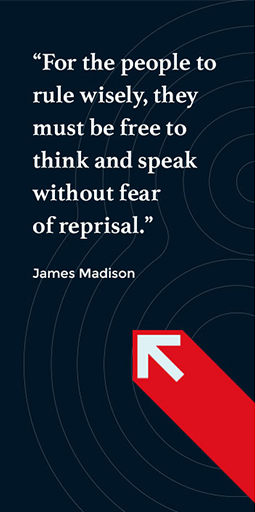 Free speech is under attack. Today, higher education is ground zero for testing out dangerous forms of censorship that instill fear, propel viewpoint discrimination, and restrict vital academic discourse.
Free speech is under attack. Today, higher education is ground zero for testing out dangerous forms of censorship that instill fear, propel viewpoint discrimination, and restrict vital academic discourse.
One increasingly popular tactic is the Bias Reporting System (BRS). These elaborate schemes are designed to silence dissenters, stifle open dialogue, and encourage students to report speech they deem unacceptable. Two federal courts of appeals have already recognized the chilling effect of BRSs. In 2019 the Sixth Circuit stated that BRSs impose an “objective chill” on speech because they “act by way of implicit threat of punishment and intimidation to quell speech.”
Similarly, in 2020, the Fifth Circuit agreed, stressing that BRSs “represent the clenched fist in the velvet glove of student speech regulation.”
_______________________
1 This was in reference to the University of Michigan’s BRS, in Speech First, Inc. v. Schlissel, 939 F.3d 756, 765 (6th Cir.2019). https://speechfirst.org/wp-content/uploads/2019/10/Michigan-Decision.pdf
2 This was in reference to the University of Texas’s BRS, in Speech First, Inc. v. Fenves, 979 F.3d 319, 338 (5th Cir. 2020). https://speechfirst.org/wp-content/uploads/2020/10/UT-opinion.pdf
This 2022 Report, ‘Free Speech in the Crosshairs: Bias Reporting on College Campuses,’ is the first comprehensive report covering these issues in nearly five years. Speech First’s report provides updated data, trends, and reflections in order to provide new insights into the rapid growth of bias reporting systems.
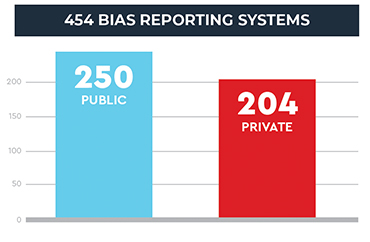 We evaluated 821 institutions of higher education and found that the majority of them (56%) have Bias Reporting Systems. In total, we identified 454 Bias Reporting Systems (BRSs) at public and private institutions of higher education across the country. Of these, 250 were found in public institutions and 204 in private institutions – and 53% of the most egregious forms of BRSs were housed in Diversity, Equity, and Inclusion (DEI) offices.
We evaluated 821 institutions of higher education and found that the majority of them (56%) have Bias Reporting Systems. In total, we identified 454 Bias Reporting Systems (BRSs) at public and private institutions of higher education across the country. Of these, 250 were found in public institutions and 204 in private institutions – and 53% of the most egregious forms of BRSs were housed in Diversity, Equity, and Inclusion (DEI) offices.
Before this Report, the primary data available on this issue was the 2017 report from the Foundation for Individual Rights in Education (FIRE), which identified 232 Bias Reporting Systems (BRSs) on American college campuses. The FIRE report predicted that this number would “grow rapidly.” FIRE’s prediction turned out to be correct. In this report, Speech First identifies 454 BRSs, twice as many as identified by FIRE just five years ago. Moreover, this report is largely based on information that universities publicly report. It is very likely that some BRSs are not publicized, and so these reporting systems are far more pervasive than we know.
In short, our data shows that Bias Reporting Systems have been spreading rapidly. Our report outlines the scope of this problem and includes an appendix of all the schools we found with identified BRSs.
Tackling BRSs will require some combination of the following:
- Legal action– Hold universities accountable for their bad policies in the court of law.
- Public pressure– Parents, students, and alumni should inform state and national legislators as well as the media about free speech concerns on their campuses.
- Engage alumni and donors– Donors should demand transparency from the universities they give to.
- Use state and federal funding to apply pressure– Tax-payer funded institutions are beholden to the people.
- Empower students– Students should know their rights and recognize when those rights are being violated.
_______________________
3 We define a BRS as any system that solicits reports of incidents concerning speech protected by the First
Amendment, such as speech that is “biased,” “offensive,” “unwanted,” “discriminatory,” “hateful,” or “microaggressive.”
4 These BRSs are formalized, coherent teams explicitly devoted to the solicitation and review of bias incident reports by a designated group of cross-departmental members, university officials and often campus security or law enforcement.
5 “2017 Report on Bias Reporting Systems.” FIRE. Accessed September 30, 2021. https://www.thefire.org/research/publications/bias-response-team-report-2017/report-on-bias-reporting-systems-2017/
6 Ibid.
“For the people to rule wisely, they must be free to think and speak without fear of reprisal.” – James Madison
What are Bias Reporting Systems?
 FIRE’s 2017 Report defined a bias reporting system ‘as any system identified as such, or that provides’:
FIRE’s 2017 Report defined a bias reporting system ‘as any system identified as such, or that provides’:
- a formal or explicit process for or solicitation of
- reports from students, faculty, staff, or the community
- concerning offensive conduct or speech that is protected by the First Amendment or principles of expressive or academic freedom.
Bias Reporting Systems are university teams or procedures that are specifically designated to solicit, receive, investigate, and respond to reports of “bias incidents” or other similar speech at their institutions. Typically, BRSs invite students and faculty to report speech that is “biased” on the basis of some protected characteristic such as race, religion, sex, sexual orientation, gender identity/expression, age, disability. Many even include “bias” against someone’s “political affiliation.”
Students, faculty, and staff who believe they have experienced or witnessed a “bias incident” can usually report the incident to their college or university through an online reporting form. In most of these forms, the reporter can choose to remain anonymous.
BRSs are typically staffed by the university’s senior faculty and staff. And some include a police officer on the team itself—a literal speech police.
After receiving a complaint about an alleged “bias incident,” the BRS reviews the incident report and will either conduct an “educational intervention” with the accused student or forward the complaint to another university department for further review. Some BRSs maintain a public log of reported bias incidents, sometimes with enough detail that others on campus can deduce who was involved. And virtually all universities claim that these processes are designed to assess the campus climate and monitor “patterns” of hate and bias to help the university improve its trainings, programs, or policies. Students reported to these systems do not know whether or not the university is keeping records—records that could follow them well beyond college and into their professional careers.
After receiving a complaint about an alleged “bias incident,” the BRS reviews the incident report and will either conduct an “educational intervention” with the accused student or forward the complaint to another university department for further review. Some BRSs maintain a public log
_______________________
7 Ibid.
8 Ibid.
9 Ibid.
10 https://www.thefire.org/speech-code-of-the-month-university-of-vermont/
of reported bias incidents, sometimes with enough detail that others on campus can deduce who was involved. And virtually all universities claim that these processes are designed to assess the campus climate and monitor “patterns” of hate and bias to help the university improve its trainings, programs, or policies. Students reported to these systems do not know whether or not the university is keeping records—records that could follow them well beyond college and into their professional careers.
The University of Maryland’s description of its BRS is emblematic:
- The primary role of the Hate-Bias Response Team is to review hate-bias incidents, to provide appropriate responses based on the nature of the incident and to work collaboratively to provide educational outreach to the campus … Bias Incident Support Services (BISS) is charged with addressing hate-bias incidents targeting UMD students, faculty and staff. The program responds, educates and reports to the campus community about bias, its impact, as well as protocols related to bias … [BISS] is committed to holistically addressing hate-bias incidents that target UMD community members by focusing on incident response and support, proactive training and education initiatives, and data collection and distribution … BISS staff collects and analyzes data related to hate-bias incidents which allows for the evaluation of trends, the assessment of training needs and strategizing of prevention efforts.
Similarly, the University of Tennessee at Knoxville describes its BRS (what it calls the “Bias Education and Response Team,” or BERT) as using the following protocol:
- The team members will review incident reports and meet with affected students to facilitate services such as counseling, health services, or other referrals as needed to address safety concerns and to provide assistance and comfort to those impacted … [and] develop an appropriate plan to initiate communication with the broader community and make referrals to the Office of Student Conduct and Community Standards, Office of Equity and Diversity, or the University of Tennessee Police Department if the incident appears to violate a university policy or state/federal law … Any student found to be responsible for an act of bias, which violates university Standards of Conduct or criminal law, will be subject to disciplinary sanctions up to and including permanent dismissal from the university.
BRSs frequently define “bias incidents” in vague and overbroad terms, making them difficult for students to interpret and easy for administrators to employ at their discretion. Nevertheless, all of the definitions make one thing clear: they apply to student speech. As a result, students often self-censor to avoid running afoul of these teams. Recent data shows that only 32% of college students feel that it is very or extremely clear that their college administration protects free speech on campus.
Apart from the reporting teams described above, BRSs can often arise as vague online systems embedded within other boards or committees already established on campus — systems
_______________________
11 FIRE. “The 2021 College Free Speech Rankings.”
soliciting reports of incidents concerning speech that is biased, offensive, unwanted, discriminatory, hateful, or a “microaggression.”
The Dangers of BRSs
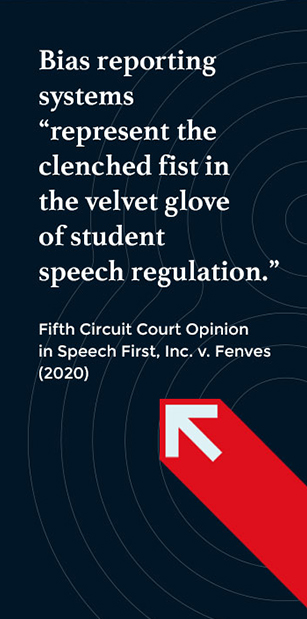 BRSs intimidate and silence students whose viewpoints do not conform to the dominant social, political, and cultural narratives on campus. By design, these teams create an environment of fear that chills speech and dialogue between students of diverse beliefs and perspectives, ultimately silencing speech through self-censorship. This chilling effect was confirmed by a 2021 joint study conducted by FIRE, College Pulse, and RealClearPolitics, which found that more than 80% of college students in the U.S. self-censor. The result of this climate of intimidation and self-censorship is a campus environment that fosters fearful silence instead of a healthy back-and-forth in the classroom, in dorms, at club events, and in social settings.
BRSs intimidate and silence students whose viewpoints do not conform to the dominant social, political, and cultural narratives on campus. By design, these teams create an environment of fear that chills speech and dialogue between students of diverse beliefs and perspectives, ultimately silencing speech through self-censorship. This chilling effect was confirmed by a 2021 joint study conducted by FIRE, College Pulse, and RealClearPolitics, which found that more than 80% of college students in the U.S. self-censor. The result of this climate of intimidation and self-censorship is a campus environment that fosters fearful silence instead of a healthy back-and-forth in the classroom, in dorms, at club events, and in social settings.
The broad definition of “bias” allows universities to burden a broad range of constitutionally protected expression. And a lack of clear and meaningful standards opens the door to arbitrary or discriminatory enforcement.
The definition of a “bias incident” at most universities is so broad that it encompasses even political speech. Common definitions include speech that is “motivated by a bias against a person in part because of that person’s … political affiliation … or intellectual perspective” (the University of Mississippi), or biased expressions “based on … perceived political ideas” (Eastern Mennonite University). But students must be able to speak freely and offer their perspectives on historical and current events and ideas. As Speech First warned in its case against the University of Michigan, “[u]nder the plain text of [the BRS’s] definitions, a student may be deemed to have acted with ‘bias’ if, for example, she gives a speech sharply criticizing the Catholic Church and its adherents for not allowing women to become priests; this student has expressed a ‘negative opinion’ or ‘attitude’ about a certain group of people based on their ‘cultural experience’ of religion.” Such rich and valuable discourse should not be discouraged through university intimidation.
BRSs also frequently combine immense power with a lack of oversight or accountability. Many BRSs can either initiate disciplinary actions against students or refer allegations to other university departments with disciplinary authority. But even when a BRS disclaims any formal disciplinary authority, the mere presence of a team consisting of senior administrators responsible for monitoring student expression inevitably chills speech. The simple fear of being anonymously reported to university authorities and subjected to process-is-punishment investigations (which often include university officials and law enforcement), diversity and anti-bias trainings, and public stigmatization is a present and powerful force on campuses across the country.
_______________________
12 Ibid.
13 https://legalinsurrection.com/wp-content/uploads/2018/05/Speech-First-v.-U.-Michigan-Complaint.pdf
Bias reporting systems “represent the clenched fist in the velvet glove of student speech regulation.”
Fifth Circuit Court Opinion in Speech First, Inc. v. Fenves (2020)
With these powerful, unaccountable systems and broad definitions in place, universities solicit complaints from students about their classmates’ speech. Put differently, they ask students to report one another simply for expressing disagreement with or an alternative perspective from the dominant social, political, or cultural narrative on campus.
BRSs ultimately contribute to a culture on campus that prevents students from voicing unpopular beliefs about the most important issues of the day — topics like racial inequality, abortion, gender identity, gun control, or contemporary socio-political phenomena like the George Floyd protests.
That’s why these policies undermine the very foundational purpose of our educational institutions. As Amna Khalid and Jeff Snyder, professors of History and Educational Studies at Carleton College, have warned, BRSs “degrade education by encouraging silence instead of dialogue, the fragmentation of campuses into groups of like-minded people, and the deliberate avoidance of many of the most important — and controversial — topics across all academic disciplines. They are inherently anti-intellectual enterprises, fundamentally at odds with the mission of higher education.”
Paradoxically, BRSs undermine the very diversity that the proponents of BRSs claim to seek. Diversity of all kinds, including diversity of thought, is central to educational excellence. As a result, BRSs present a formidable threat to educational excellence. As Khalid and Snyder correctly feared, bias response systems:
- undermine a bedrock principle of the modern university: that more diversity leads to better learning … [D]iversity works its magic only through meaningful contact between people with varying ‘identity characteristics.’ Contact, by definition, will sometimes lead to conflict. Imagine a conversation between an evangelical student and a gay student on same-sex marriage, or a discussion about U.S. drone policy between a dove and a hawk. Such conversations are invaluable. But without the space to debate and argue, students won’t ever be forced to confront the underlying assumptions framing their worldviews. BRTs threaten to drive students into their own corners with peers who look and think like them, reducing the potency of diversity to a glib slogan on admissions brochures.
Methodology
_______________________
14 These are, according to the FIRE/CollegePulse/RealClearPolitics 2021 report, the most difficult topics of discussion on campuses today.
15 Snyder, Jeffrey Aaron, and Amna Khalid. “The Rise of ‘Bias Response Teams’ on Campus.” The New Republic, March 30, 2016. https://newrepublic.com/article/132195/rise-bias-response-teams-campus.
16 Ibid.
The Colleges and Universities in this Report

We evaluated the leading four-year colleges and universities in every state, generating a significant pool of both private and public schools. Ultimately, our study covered 441 private schools (which represent 23% of all private four-year colleges in the U.S.), and 380 public schools (which represent 49% of all public four-year colleges in the U.S.), for a total of 821 institutions.
In 2016, FIRE defined a Bias Reporting System as “any system identified as such, or that provides a formal or explicit process for or solicitation of reports from students, faculty, staff, or the community concerning offensive conduct or speech that is protected by the First Amendment or principles of expressive or academic freedom.” Similarly, in Speech First’s report, an institution is deemed to have a Bias Reporting System if it houses an established system (a devoted incident report form and adjudicating team/council/board) that explicitly solicits reports of speech that is:
- Biased
- Offensive
- Unwanted
- Discriminatory
- Hate/hateful
- A microaggression
Results
We found 454 Bias Reporting Systems at four-year public and private institutions of higher education across the country (56% of the total 821 schools examined in our report). Of these, 204 were found in private institutions and 250 in public institutions (46% of all private schools and 66% of all public schools examined in our report thus have a BRS).
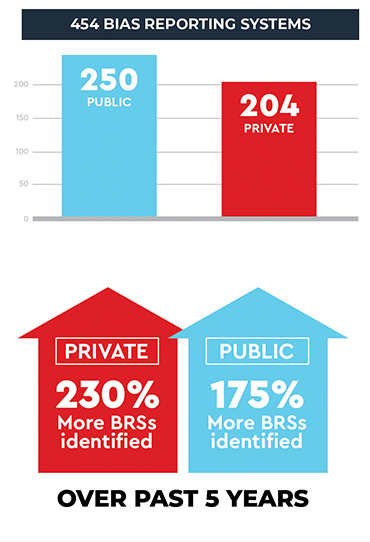
Our report thus found 230% more BRSs at private universities and 175% more BRSs at public universities than FIRE did just five years ago (FIRE found 89 and 143 BRSs, respectively). Considering our report only examined 49% of public four-year colleges and 23% of private four-year colleges, the number of BRSs would swell if we were to examine every university.
Nearly every reporting system allows for anonymous reporting, and 53% of the most expansive forms of these systems were housed in Diversity, Equity, and Inclusion (DEI) offices.
_______________________
17 “Digest of Education Statistics, 2020.” National Center for Education Statistics (NCES) Home Page, a Part of the U.S. Department of Education. Accessed November 23, 2021. https://nces.ed.gov/programs/digest/d20/tables/dt20_317.20.asp.
18 Ibid.
19 “2017 Report on Bias Reporting Systems.” FIRE.
20 These BRSs are formalized, coherent teams explicitly devoted to the solicitation and review of bias incident reports by a designated group of cross-departmental members, university officials and often campus security or law enforcement.
In total, we identified twice as many BRSs as FIRE did in 2017 (454 identified in our report, versus 232</b identified in FIRE’s 2017 survey).
An appendix of all 454 schools with BRSs can be found in our Appendix of Universities with BRSs on p. 15.
Institutions With Bias Reporting Systems
BRSs found in 2017
(MAP 1)
BRSs found in 2022
(MAP 2)
“Students across the nation are self-censoring for fear of being suspended, failing to be hired for a job, or being ostracized from society. We see this because practical policy ideas are often turned into these outrageous questions of good and evil – if someone disagrees with you politically, you do not just disagree, but you are now a bad person.” – Emma Blair, Grand Canyon University
Institutions with Bias Reporting
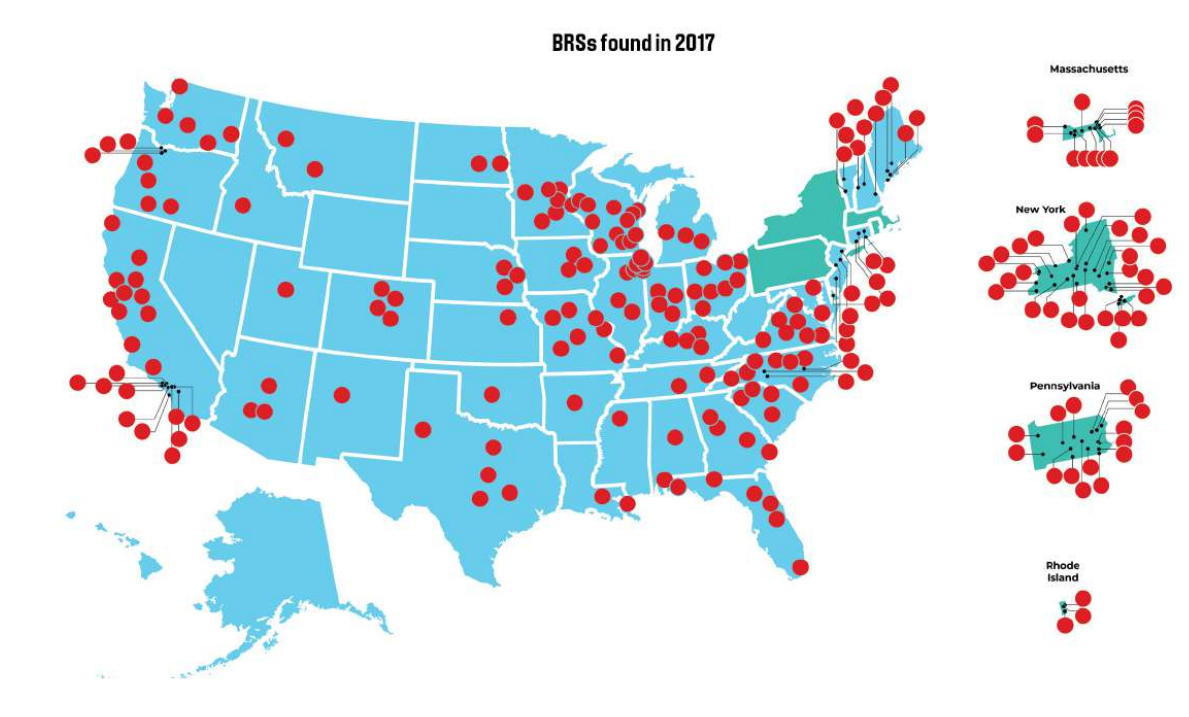
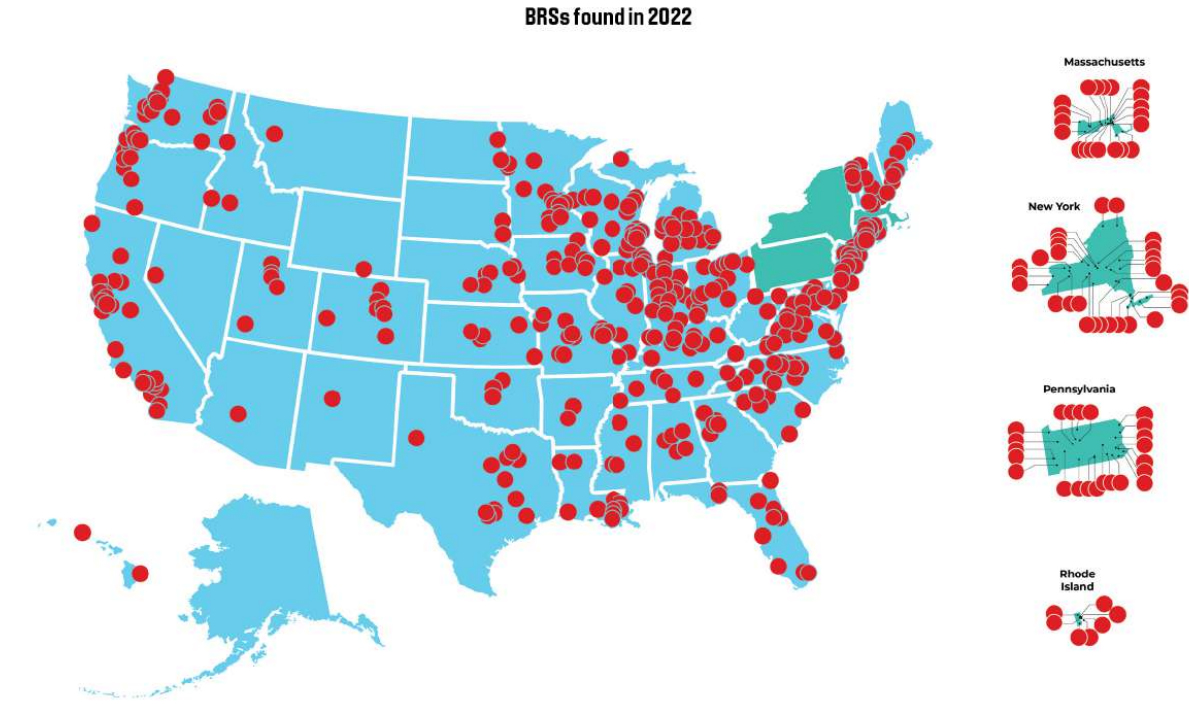
What Can Be Done
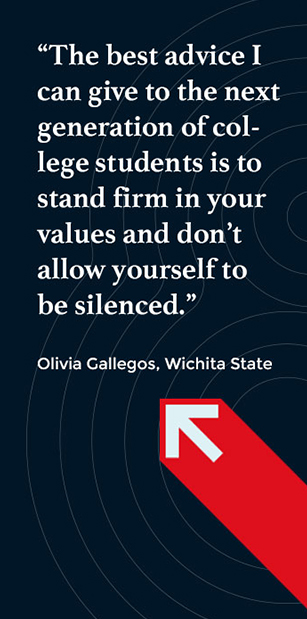 Since our nation’s founding, Americans have placed a high value on the fundamental freedoms to speak, inquire, and learn, freedoms enshrined in the First Amendment. These freedoms not only infuse the spirit of the liberal arts, but are also essential to the continued health and existence of our nation. Central to liberal democracy and the republican form of government is a spirit of political participation that requires curious, engaged citizens who can speak and think freely with one another. As is a basic tolerance for opposing viewpoints and a vigilance against tyranny in all of its obvious and subtle forms.
Since our nation’s founding, Americans have placed a high value on the fundamental freedoms to speak, inquire, and learn, freedoms enshrined in the First Amendment. These freedoms not only infuse the spirit of the liberal arts, but are also essential to the continued health and existence of our nation. Central to liberal democracy and the republican form of government is a spirit of political participation that requires curious, engaged citizens who can speak and think freely with one another. As is a basic tolerance for opposing viewpoints and a vigilance against tyranny in all of its obvious and subtle forms.
The dangerous effects of BRSs must be confronted and addressed. It’s not just about defending essential freedoms, but also about creating and sustaining a society in which we can exercise them. These policies do not cultivate a space of inclusion and diversity. Instead, they compromise students’ fundamental rights to free speech and inquiry, profoundly weaken the academy, and threaten our constitutional republic and our relentless pursuit of a more perfect union.
Several steps can and should be taken, in conjunction, to address BRSs.
Take legal action. Speech First holds universities accountable for their actions. We have been on the front lines of the fight against bias reporting policies from the beginning, and many of our
_______________________
21 Data from FIRE’s 2017 Report on Bias Reporting Systems
cases have involved the activities of BRSs and their chilling effects on student speech. To date, Speech First is the only organization to prevail in litigation against a bias reporting system, effectively ending the systems at the University of Michigan and University of Texas. If you’re interested in taking action on your own campus to stop a BRS from censoring student speech, you should reach out to Speech First or other public-interest groups who protect students’ First Amendment rights.
Monitor and revoke state and federal funding for universities that violate students’ First Amendment rights. Public universities are taxpayer-funded institutions and are thus answerable to the people. Even private universities receive state and federal grants and, as a condition of receiving those funds, must comply with the applicable regulations to the same degree as public universities. At the federal level, the Department of Education needs to monitor the campus speech policies of schools that receive federal funding. Moreover, if a university applying for a federal grant has policies that appear to facially restrict student speech, its application should be paused for further investigation.
State governments can also play an important role. They can enact legislation to enhance transparency at state universities and provide oversight to ensure that public institutions comply with those requirements. State legislatures could, for example, require public universities to conduct annual student surveys evaluating the free speech climates on their campuses. States could mandate that freshmen orientations include courses on the First Amendment and exercising free speech. Additionally, because most BRSs are housed in university DEI departments, state legislators could mandate increased disclosures from DEI departments about their BRS procedures. A recent report from the Idaho Freedom Foundation lists several additional ways lawmakers can reform college campuses, such as designating all outdoor areas on public universities as public forums open to free speech and requiring colleges and universities to disclose how their policies protect free speech on their campuses. These types of policies incentivize transparency and encourage universities to aim for open discourse and free speech on their campuses.
Apply public pressure. Parents, students, and alumni should regularly engage with their state legislators, congressional representatives and staff, and university boards of trustees. Public pressure can not only alert policymakers to the gravity of the issue but also inspire them to champion campus free speech issues. Lawmakers often don’t see a spirited push about student free speech rights from their constituents, but the more that constituents emphasize this issue, the greater the pressure to take action will become. Alumni must also emphasize to university boards of trustees that initiatives like BRSs will damage the prestige of their institutions and weaken their academic reputations.
Engage alumni donors. Alumni should exert pressure on their alma maters. Major donors
_______________________
22 “See Department of Education, Free inquiry Rule, 85 Fed. Reg. 59916 (Sept. 23, 2020), https://bit.ly/3iROiq8.
23 “Social Justice in Idaho Higher Education, University of Idaho – Idaho Freedom.” Accessed February 4, 2022. https://idahofreedom.org/research/social-justice-in-idaho-higher-education-university-of-idaho/.
should take a closer look at how the universities they love and support have changed from when they were last on campus. Millions of dollars of alumni donations are being spent on DEI departments and other misguided efforts that lead to speech restrictions on campus.
Empower students. Finally, students must recognize the responsibility they have to themselves. Self-censorship, avoiding discussions and debates, and other forms of complacency will not lead to more open discourse on campus. Instead, it will embolden those who wish to eliminate dissenting voices. Students must know their constitutional rights, federal and state laws, and campus policies. Students should note any red flags when reading student handbooks and reach out to organizations like Speech First when they encounter policies that chill speech on campus. Because Speech First will be there every step of the way, students can have the courage to speak whenever and wherever campus administrators, faculty, and peers try to shut down speech. Finally, students who support free speech on campus should consider running for Student Government, founding or joining clubs that advocate for the First Amendment, or writing for the campus paper or other news and media outlets.
Below is advice from students who are on campuses now and facing similar challenges:
“The best advice I can give to the next generation of college students is to stand firm in your values and don’t allow yourself to be silenced.”– Olivia Gallegos, Wichita State
“The biggest piece of advice I would offer is to become so extraordinarily educated on your beliefs and opinions that you become confident enough to speak up and out against those silencing you. And when you are met with opposition and the stifling of your speech, fight back with facts.”– Adam Fairchild, University of Colorado- Boulder
“My best advice to college students and beyond is to always remember that the Constitution is on your side. We need more students who are willing to stand up in their classrooms, challenge colleges and universities when they attempt to silence them and encourage their peers to do the same.”– Kiara Kincaid, University of Oklahoma
“The best advice I can give to the next generation of college students is to stand firm in your values and don’t allow yourself to be silenced.” – Olivia Gallegos, Wichita State
Appendix of Universities with BRSs
This appendix lists every university in our report that maintains a BRS and links to their respective webpages. As outlined in the What are Bias Reporting Systems? section on p. 5, these systems use a wide array of language and procedures, but they all have one thing in common—unnecessarily chilling speech student speech that is outside of the mainstream.
_______________________
24 “Greene, Jay P. “Diversity University: DEI Bloat in the Academy.” The Heritage Foundation. Accessed February 4, 2022. https://www.heritage.org/education/report/diversity-university-dei-bloat-the-academy.
-
Alabama
- Auburn University
- Birmingham-Southern College
- Huntingdon College
- Jacksonville State University
- Spring Hill College
- University of Alabama
- University of South Alabama
-
Arizona
- University of Arizona
-
Arkansas
- Henderson State University
- University of Central Arkansas
-
California
- California Polytechnic State University
- California State University, Chico
- California State University, East Bay
- California State University, Northridge
- California State University, Sacramento
- California State University, San Marcos
- Harvey Mudd College
- Humboldt State University
- Pomona College
- San Francisco State University
- San Jose State University
- Santa Clara University
- Scripps College
- Stanford University
- Sonoma State University
- UC, Berkeley
- UC, Davis
- UC, Irvine
- UC, Los Angeles
- UC, Merced
- UC, Riverside
- UC, San Diego
- UC, San Francisco
- UC, Santa Barbara
- UC, Santa Cruz
- University of Southern California
-
Colorado
- Colorado Mesa University
- Colorado School of Mines
- Colorado State University
- Colorado State University, Pueblo
- Regis University
- University of Colorado Boulder
- University of Denver
-
Connecticut
- Central Connecticut State University
- Connecticut College
- Fairfield University
- Sacred Heart University
- Southern Connecticut State University
- Trinity College – Connecticut
- University of Connecticut
- University of New Haven
- University of Saint Joseph
- Wesleyan University
- Yale University
-
Florida
- Florida A&M University
- Florida Gulf Coast University
- Florida International University
- Florida State University
- Rollins College
- Stetson University
- University of Central Florida
- University of Florida
- University of Miami
- University of North Florida
- University of Tampa
-
Georgia
- Agnes Scott College
- Berry College
- Emory University
- Georgia Institute of Technology
- University of West Georgia
-
Hawaii
- Brigham Young University – Hawaii
- University of Hawaii at Hilo
-
Idaho
- Boise State University
- The College of Idaho
- University of Idaho
-
Illinois
- Augustana College – Illinois
- Eastern Illinois University
- Illinois Institute of Technology
- Illinois State University
- Illinois Wesleyan University
- Lake Forest College
- Loyola University Chicago
- Northern Illinois University
- Northwestern University
- Southern Illinois University at Carbondale
- Southern Illinois University at Edwardsville
- University of Chicago
- University of Illinois at Chicago
- Wheaton College – Illinois
-
Indiana
- Ball State University
- Butler University
- Depauw University
- Earlham College
- Hanover College
- Indiana State University
- Indiana University, Bloomington
- Indiana University, East
- Indiana University, Kokomo
- Indiana University, Northwest
- Indiana University – Purdue University Indianapolis
- Indiana University, South Bend
- Indiana University, Southeast Purdue University
- Purdue University Fort Wayne/ Indiana University Fort Wayne
- University of Evansville
- University of Notre Dame
- University of Southern Indiana
- Valparaiso University
- Wabash College
-
Iowa
- Coe College
- Cornell College
- Drake University
- Grinnell College
- Iowa State University
- Luther College
- University of Iowa
- University of Northern Iowa
-
Kansas
- Baker University
- Friends University
- Pittsburg State University Sterling College
- Wichita State University
-
Kentucky
- Bellarmine University
- Centre College
- Eastern Kentucky University
- Morehead State University
- Northern Kentucky University
- Transylvania University
- University of Kentucky
- University of Louisville
- Western Kentucky University
-
Louisiana
- Centenary College of Louisiana
- Dillard University
- Grambling State University
- Louisiana State University
- Loyola University New Orleans
- Southeastern Louisiana University
- Tulane University
- University of New Orleans
- Xavier University of Louisiana
-
Maine
- Bates College
- Bowdoin College
- Colby College
- Husson University
- University of Maine
- University of New England
- University of Southern Maine
-
Maryland
- Frostburg State University
- Goucher College
- Hood College
- Johns Hopkins University
- Loyola University
- Maryland McDaniel College
- Stevenson University
- Towson University
- University of Maryland
- Washington College
-
Massachusetts
- Amherst College
- Babson College
- Boston College
- Boston University
- College of the Holy Cross
- Fitchburg State University
- Framingham State University
- Harvard University
- Massachusetts Institute of Technology
- Massachusetts Maritime Academy
- Northeastern University
- Salem State University
- Tufts University
- University of Massachusetts – Amherst
- University of Massachusetts Dartmouth
- University of Massachusetts at Lowell
- Wellesley College
- Westfield State University
- Williams College
- Worcester State University
-
Michigan
- Albion College
- Andrews University
- Aquinas College – Michigan
- Calvin University
- Central Michigan University
- College for Creative Studies
- Grand Valley State University
- Hope College
- Kalamazoo College
- Lawrence Technological University
- Michigan State University
- Michigan Technological University
- Saginaw Valley State University
- Spring Arbor University
- University of Michigan – Ann Arbor
- University of Michigan – Dearborn
- University of Michigan – Flint Western
- Michigan University
-
Minnesota
- Bemidji State University
- Carleton College
- Concordia College
- Gustavus Adolphus College
- Macalester College
- Minnesota State University, Mankato
- Minnesota State University, Moorhead
- North Central University
- Saint Cloud State University
- St. Catherine University
- St. Olaf College
- University of Minnesota – Morris
- University of Minnesota – Twin Cities
- University of St. Thomas – Minnesota
-
Mississippi
- Jackson State University
- Mississippi College
- Mississippi State University
- University of Mississippi
-
Missouri
- Drury College
- Fontbonne University
- Maryville University
- Missouri State University
- Missouri University of Science and Technology
- Saint Louis University
- Southeast Missouri State University
- University of Missouri – Columbia
- University of Missouri – Kansas City
- University of Missouri – Rolla
- University of Missouri – St. Louis
- Washington University in St. Louis
- William Jewell College
-
Montana
- Carroll College
-
Nebraska
- Bellevue University
- Creighton University
- Doane University
- Hastings College
- Nebraska Wesleyan University
- University of Nebraska – Lincoln
- University of Nebraska Omaha
-
Nevada
- University of Nevada, Reno
-
New Hampshire
- Colby-Sawyer College
- Dartmouth College
- Franklin Pierce University
- Southern New Hampshire University
- University of New Hampshire
-
New Jersey
- Drew University
- Kean University
- Monmouth University
- Montclair State University
- New Jersey Institute of Technology
- Princeton University
- Rider University
- Rowan University
- Rutgers University – New Brunswick
- Seton Hall University
- Stevens Institute of Technology
- Stockton University
- The College of New Jersey
- William Paterson University
-
New Mexico
- University of New Mexico
-
New York
- City College of New York
- Colgate University
- College of Staten Island
- Columbia University
- Cornell University
- CUNY, Hunter College
- Hamilton College
- New York University
- Skidmore College
- Stony Brook University
- SUNY Albany
- SUNY Binghamton
- SUNY Brockport
- SUNY Buffalo
- SUNY Cobleskill
- SUNY Cortland
- SUNY Environmental Science and Forestry
- SUNY Empire
- SUNY Fredonia
- SUNY Geneseo
- SUNY Morrisville
- SUNY New Paltz
- SUNY Old Westbury
- SUNY Oneonta
- SUNY Oswego
- SUNY Plattsburgh
- SUNY Potsdam
- University of Rochester
- Vassar College
-
North Carolina
- Appalachian State University
- Davidson College
- Duke University
- Elizabeth City State University
- Elon University
- Fayetteville State University
- High Point University
- North Carolina A&T State University
- North Carolina State University
- University of North Carolina – Asheville
- University of North Carolina – Chapel Hill
- University of North Carolina – Charlotte
- University of North Carolina – Greensboro
- Wake Forest University
- Western Carolina University
-
North Dakota
- North Dakota State University
- University of North Dakota
-
Ohio
- Bowling Green State University
- Cleveland State University
- Case Western Reserve University
- College of Wooster
- Denison University
- John Carroll University
- Keene State College
- Miami University of Ohio
- Oberlin College
- Ohio University
- The Ohio State University
- University of Cincinnati
- University of Dayton
- Wright State University
- Youngstown State University
-
Oklahoma
- Oklahoma State University
- University of Central Oklahoma
- University of Oklahoma
-
Oregon
- George Fox University
- Lewis & Clark College
- Linfield University
- Oregon Institute of Technology
- Oregon State University
- Pacific University Oregon
- Portland State University
- Reed College
- Southern Oregon University
- University of Oregon
- University of Portland specifically School of Nursing
- Western Oregon University
- Willamette University
-
Pennsylvania
- Bryn Mawr College
- Bucknell University
- California University of Pennsylvania
- Carnegie Mellon University
- Cheyney University of Pennsylvania
- Clarion University of Pennsylvania
- East Stroudsburg University of Pennsylvania
- Edinboro University of Pennsylvania (Linked with Clarion)
- Franklin & Marshall College
- Indiana University of Pennsylvania
- Kutztown University of Pennsylvania
- Lafayette College
- Lehigh University
- Lock Haven University of Pennsylvania
- Mansfield University of Pennsylvania
- Millersville University of Pennsylvania
- Pennsylvania State University – University Park
- Shippensburg University of Pennsylvania
- Swarthmore College
- University of Pennsylvania
- University of Pittsburgh
- Villanova University
- West Chester University of Pennsylvania
-
Rhode Island
- Brown University
- Bryant University
- Providence College
- Rhode Island College
- Rhode Island School of Design
- Roger Williams University
- University of Rhode Island
-
South Carolina
- Clemson University
- Coastal Carolina University
- College of Charleston
- Furman University
- University of Presbyterian College South Carolina
- Winthrop University
- Wofford College
-
South Dakota
- Augustana University
- South Dakota State University
-
Tennessee
- East Tennessee State University
- Lipscomb University
- Middle Tennessee State University
- Rhodes College
- Sewanee – The University of the South
- Union University
- University of Tennessee – Knoxville
-
Texas
- Baylor University
- Rice University
- Southern Methodist University
- Tarleton State University
- Texas A&M University
- Texas Christian University
- Texas State University
- Texas Tech University
- Texas Woman’s University
- Trinity University
- University of Texas at San Antonio
-
Utah
- Southern Utah University
- University of Utah
- Utah Valley University
- Weber State University
- Westminster College – Utah
-
Vermont
- Champlain College
- Middlebury College
- Saint Michael’s College
- Sterling College – Vermont
- University of Vermont
-
Virginia
- Eastern Mennonite University
- George Mason University
- James Madison University
- Liberty University
- Longwood University
- Norfolk State University
- Radford University
- Roanoke College
- Shenandoah University
- The College of William and Mary
- The University of Virginia’s College at Wise
- University of Mary Washington
- University of Richmond
- University of Virginia
- Virginia Polytechnic Institute and State University
- Washington and Lee University
-
Washington
- Central Washington University
- Eastern Washington University
- Evergreen State College
- Gonzaga University
- Pacific Lutheran University
- Saint Martin’s University
- Seattle Pacific University
- Seattle University
- University of Puget Sound
- University of Washington
- University of Washington Bothell
- Western Washington University
- Whitworth University
- Whitman College
-
West Virginia
- Bethany College – West Virginia
- Davis & Elkins College
-
Wisconsin
- Alverno College
- Beloit College
- Concordia University – Wisconsin
- Lawrence University
- Marquette University
- Milwaukee Institute of Art and Design
- Mount Mary University
- St. Norbert College
- University of Wisconsin – Eau Claire
- University of Wisconsin – Green Bay
- University of Wisconsin – La Crosse
- University of Wisconsin – Madison
- University of Wisconsin – Milwaukee
- University of Wisconsin – Oshkosh
- University of Wisconsin – Platteville
- University of Wisconsin – River Falls
- University of Wisconsin – Stevens Point
- University of Wisconsin – Stout
- University of Wisconsin – Whitewater
-
Wyoming
- University of Wyoming
END NOTES
_______________________
1 This was in reference to the University of Michigan’s BRS, in Speech First, Inc. v. Schlissel, 939 F.3d 756, 765 (6th Cir.2019). https://speechfirst.org/wp-content/uploads/2019/10/Michigan-Decision.pdf
2 This was in reference to the University of Texas’s BRS, in Speech First, Inc. v. Fenves, 979 F.3d 319, 338 (5th Cir. 2020). https://speechfirst.org/wp-content/uploads/2020/10/UT-opinion.pdf
3 We define a BRS as any system that solicits reports of incidents concerning speech protected by the First
Amendment, such as speech that is “biased,” “offensive,” “unwanted,” “discriminatory,” “hateful,” or “microaggressive.”
4 These BRSs are formalized, coherent teams explicitly devoted to the solicitation and review of bias incident reports by a designated group of cross-departmental members, university officials and often campus security or law enforcement.
5 “2017 Report on Bias Reporting Systems.” FIRE. Accessed September 30, 2021. https://www.thefire.org/research/publications/bias-response-team-report-2017/report-on-bias-reporting-systems-2017/
6 Ibid.
7 Ibid.
8 Ibid.
9 Ibid.
10 https://www.thefire.org/speech-code-of-the-month-university-of-vermont/
11 FIRE. “The 2021 College Free Speech Rankings.”
12 Ibid.
13 https://legalinsurrection.com/wp-content/uploads/2018/05/Speech-First-v.-U.-Michigan-Complaint.pdf
14 These are, according to the FIRE/CollegePulse/RealClearPolitics 2021 report, the most difficult topics of discussion on campuses today.
15 Snyder, Jeffrey Aaron, and Amna Khalid. “The Rise of ‘Bias Response Teams’ on Campus.” The New Republic, March 30, 2016. https://newrepublic.com/article/132195/rise-bias-response-teams-campus.
16 Ibid.
17 “Digest of Education Statistics, 2020.” National Center for Education Statistics (NCES) Home Page, a Part of the U.S. Department of Education. Accessed November 23, 2021. https://nces.ed.gov/programs/digest/d20/tables/dt20_317.20.asp.
18 Ibid.
19 “2017 Report on Bias Reporting Systems.” FIRE.
20 These BRSs are formalized, coherent teams explicitly devoted to the solicitation and review of bias incident reports by a designated group of cross-departmental members, university officials and often campus security or law enforcement.
21 Data from FIRE’s 2017 Report on Bias Reporting Systems
22 “See Department of Education, Free inquiry Rule, 85 Fed. Reg. 59916 (Sept. 23, 2020), https://bit.ly/3iROiq8.
23 “Social Justice in Idaho Higher Education, University of Idaho – Idaho Freedom.” Accessed February 4, 2022. https://idahofreedom.org/research/social-justice-in-idaho-higher-education-university-of-idaho/.
24 “Greene, Jay P. “Diversity University: DEI Bloat in the Academy.” The Heritage Foundation. Accessed February 4, 2022. https://www.heritage.org/education/report/diversity-university-dei-bloat-the-academy.